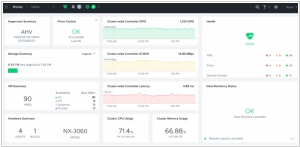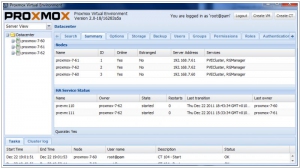Nutanix vs Proxmox
November 27, 2023 | Author: Michael Stromann
Nutanix and Proxmox represent distinct approaches to virtualization and hyper-converged infrastructure, each with its own set of features and design philosophies. Nutanix is a leading hyper-converged infrastructure solution that integrates compute, storage, and networking resources into a unified platform. It is known for its simplicity, scalability, and centralized management through the Nutanix Prism interface. Nutanix employs a scale-out architecture, allowing organizations to seamlessly add nodes to expand their infrastructure as needed. On the other hand, Proxmox Virtual Environment (Proxmox VE) is an open-source virtualization platform that combines two virtualization technologies: KVM (Kernel-based Virtual Machine) for virtual machines and LXC (Linux Containers) for lightweight container-based virtualization. Proxmox VE provides a web-based management interface and supports a range of storage options, offering flexibility in deployment and resource allocation.
One significant difference lies in the licensing models of Nutanix and Proxmox. Nutanix typically follows a proprietary model with a subscription-based licensing structure. While this may offer comprehensive support and features, it comes with associated costs. In contrast, Proxmox VE is an open-source solution with a more cost-effective licensing model, allowing organizations to leverage powerful virtualization capabilities without incurring substantial licensing fees. The choice between the two often depends on budget considerations and the preference for open-source versus proprietary solutions.
See also: Top 10 Virtualization platforms
One significant difference lies in the licensing models of Nutanix and Proxmox. Nutanix typically follows a proprietary model with a subscription-based licensing structure. While this may offer comprehensive support and features, it comes with associated costs. In contrast, Proxmox VE is an open-source solution with a more cost-effective licensing model, allowing organizations to leverage powerful virtualization capabilities without incurring substantial licensing fees. The choice between the two often depends on budget considerations and the preference for open-source versus proprietary solutions.
See also: Top 10 Virtualization platforms





